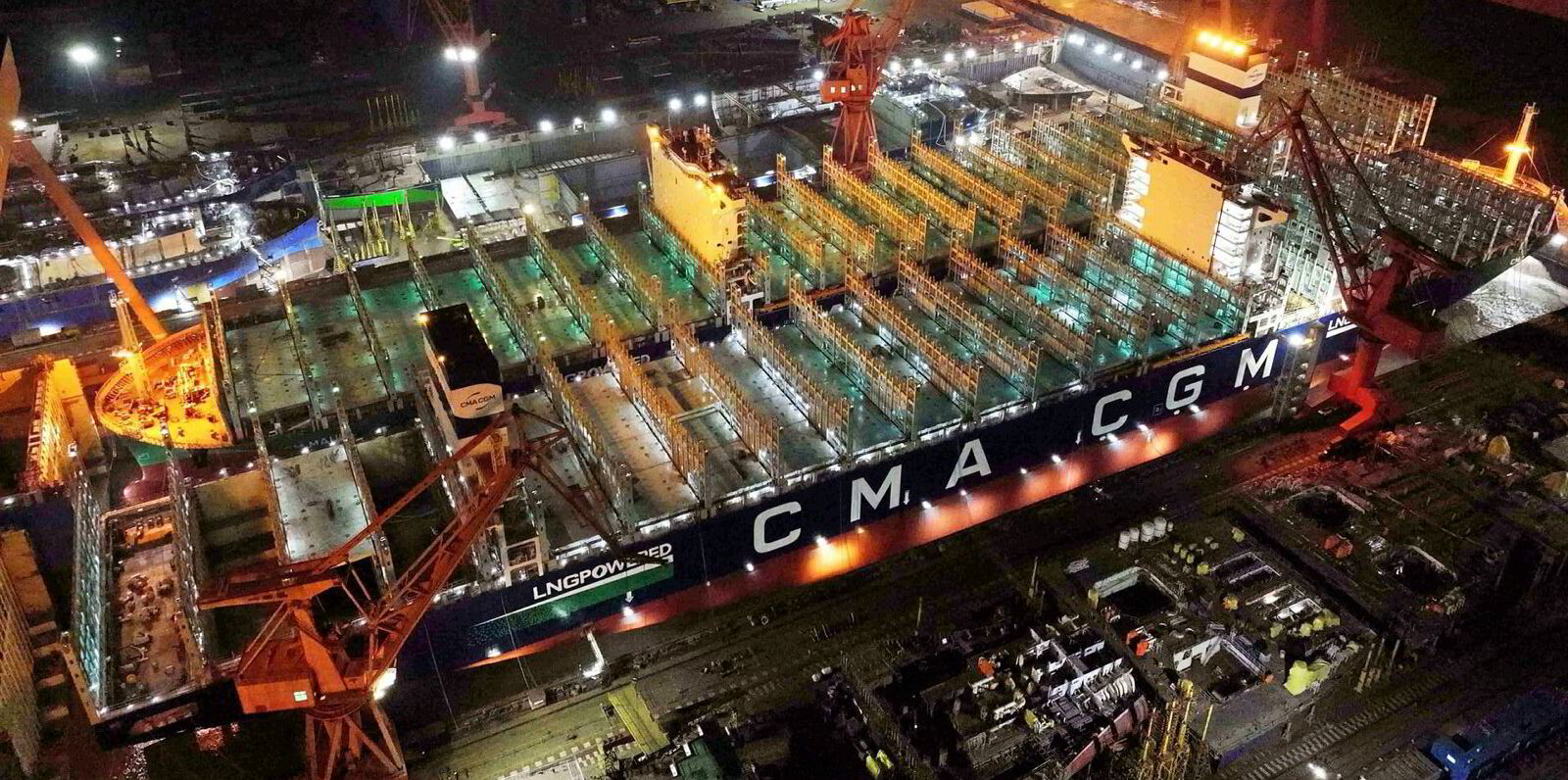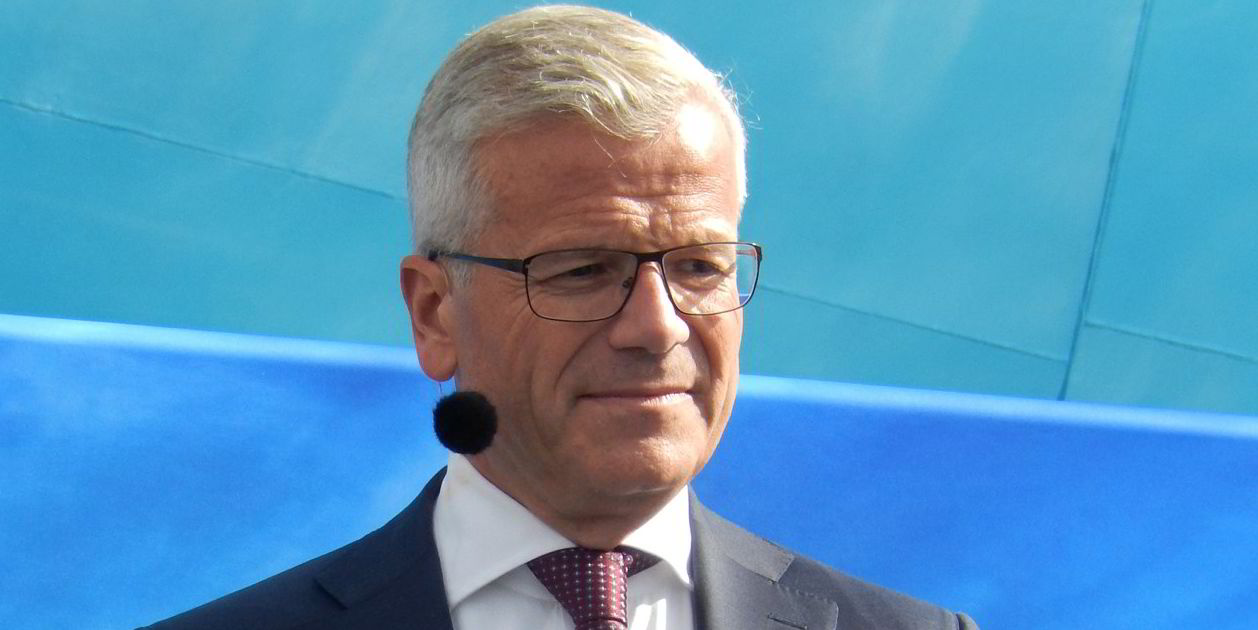Just when bulging shipyard orderbooks looked like they were in for a breather from container ship and LNG carrier tonnage, it has all started up again — on boxships, at least.
In May, TradeWinds reported about 50 container ship newbuildings under discussion. But a month on, the impending order surge would appear to have doubled.
Fearnleys director and head of research Dag Kilen said last week that more than 100 container ships are being discussed with yards globally.
Newbuilding brokers said there is little interest from buyers in the ultra-large size of 20,000 teu and above.
Instead, discussions are centring on ships from 8,000 teu to 16,000 teu.
And it is the big guns eyeing up and jostling over the slots.
This week, French liner company CMA CGM was reported to be lining up 20 LNG dual-fuel newbuildings — 12 vessels of 16,000 teu and eight of 8,000 teu, worth an estimated $3.5bn.
Hapag-Lloyd, MSC Mediterranean Shipping Company and Zim are also understood to have joined the party with new requirements.
TradeWinds has previously named Cosco Shipping Lines, Ocean Network Express, TS Lines, BAL Container Line and Emirates Shipping Line as being out shopping for boxship newbuilding tonnage.
Those companies chasing yard berths do not want to be fobbed off with late-delivering vessels, so competition for slots is said to be running hot.
Stuffed shipyards are under no obligation to hunt down fresh business but will like the multi-vessel, often high-margin, boxship business.
Newbuilding market players said this surge in action across the major names is typical of the container ship sector, where one company moves and the rest must follow.
But other drivers are also kicking in.
Pessimism on peace
The attacks on merchant shipping in the Red Sea by Houthi militants in response to Israel’s actions in Gaza have sent vessels on longer routes via the Cape of Good Hope, and the delays that has caused — particularly for boxships — are beginning to stack up.
Industry commentators and those monitoring the actions of the Houthis point to the increasing ferocity and ingenuity of the most recent attacks, which last week claimed the life of a fourth seafarer and a second vessel sinking with the strike on Evalend’s 82,000-dwt bulker Tutor (built 2002).
They said operators do not see it as a situation that will resolve soon. Some observers suggest that even a peace deal between Israel and Hamas will not bring an end to the strikes against shipping, forcing vessels to stick with the longer routes.
Skip west to the Panama Canal and it is a similar situation, albeit for completely different reasons.
The Panama Canal Authority has promised to increase transit slots following the recent drought-induced cutbacks on sailings. But many shipowners and operators believe similar water-restricted conditions could arise in the future, prompting the need for more tonnage to cope with the longer-haul routing that might be needed.
Marry the potential for increased demand for container ship capacity from these canal problems with the fact that shipowners are still sitting on cash that they need to spend, and the urge to order tonnage must go up a gear.
With rates tipping up to what Clarksons Research described as some of the highest market levels outside the Covid-related 2021/2022 surge, they may have more to splurge.
But other owners are looking at the tightening environmental regulations and are keen to renew their fleets with dual-fuel vessels, or at least ships fitted with the latest technology-saving devices that will give them the best chance of compliance.
Clarksons’ figures show the existing container ship orderbook now stands at 683 vessels, equating to almost 20% of the existing fleet, with ships in the 8,000-teu to 17,000-teu range accounting for 294 or 43% of all current newbuildings.
It seems as though these numbers are set to climb.







